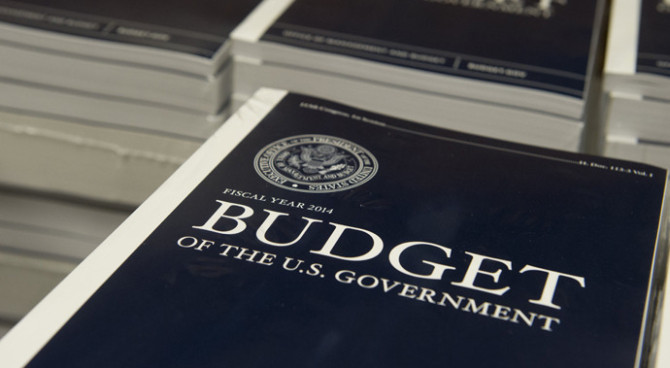The trade balance doesn’t matter for U.S. prosperity. But America could benefit from updating and enforcing its trade deals, especially with China.
Any objective analysis of America’s economic history discredits the notion that the trade balance has a defined relationship with economic growth and job creation. Using trade deficits—whether in the aggregate or with individual countries—to argue that the U.S. suffers from unfair trade practices discredits those claims and diverts attention from real problems: trade agreements that are outdated or that lack enforcement, especially with China.
President Trump has performed a service by reminding America of the suffering in the industrial heartland. But fair trade will not bring back jobs in the steel or aluminum industry, and tariffs will produce more misery than they alleviate. Tariffs, along with quotas imposed to “protect” American companies, make the U.S. a practitioner of unfair trade and diminish our credibility in opposing the unfair trading practices of others. They destroy jobs in the U.S., harm American consumers, and endanger an economic expansion that already faces greater headwinds than any in the postwar period.
From 1607, when the first English settler stepped ashore at Jamestown, to the beginning of the 20th century, America generally ran trade deficits. As a beacon of economic freedom and opportunity, it attracted foreign labor and capital and generated economic growth on a scale unprecedented in human history. From the end of the Civil War to the turn of the 20th century, 14 million immigrants arrived in search of freedom and opportunity and found both, as foreign capital transformed America into an economic colossus.
From the end of World War II through 1975, the U.S. ran trade surpluses and prospered. With most of the developed world in rubble, and America’s productive capacity intact, we enjoyed a virtual monopoly in manufacturing. Thus exports outpaced imports for 30 years. The Marshall Plan and a surge in private U.S. investment abroad provided the initial funding to rebuild the economies of Europe and Japan. Massive postwar exports drove up the demand for U.S. labor, producing growth in wages and benefits that far outstripped anything before or since. From 1946 to 1971, real manufacturing wages leapt by 77%.
Incredibly, this anomalous period—the product of a global war that left Europe and Asia in ruins and 50 million people dead—has become the political benchmark for America’s industrial performance. Its passing is now viewed as evidence that trade is harmful to Americans. By the mid-1970s, Europe and Japan had been rebuilt, while South Korea and Taiwan had become industrialized. A system of wealth creation based on trade and market-driven economies would ultimately crush the Soviet Union and win the Cold War, transform China, and bring greater prosperity to billions of people world-wide.
In the process, U.S. trade surpluses vanished. Since 1976, America has run trade deficits for 42 consecutive years. During the Reagan revitalization, strong economic growth was achieved even as the aggregate trade deficit as a percentage of gross domestic product quintupled. During the Clinton boom, the trade deficit more than quadrupled as a percentage of GDP. By contrast, during the weakest postwar recovery, 2009-16, the trade deficit barely changed, and in four of the five recessions between 1980 and 2008, the trade deficit shrank.
It is conventional wisdom that low saving rates and government deficits are major contributors to the U.S. trade deficit. No doubt greater personal thrift and a balanced federal budget would make America less reliant on foreign capital. But the U.S. ran trade deficits and budget surpluses in the decade after the Civil War in an era of high saving rates. The trade deficit grew rapidly during the Clinton years even as the U.S. ran budget surpluses, as strong economic growth attracted foreign capital. It appears to be almost a given that when the American economy is performing near its potential, it becomes an irresistible magnet for the world’s talent and capital.
If it seems counterintuitive that the trade deficit should be so unrelated to America’s historical success, it is only because by focusing only on the trade balance we are engaged in single entry bookkeeping that misses half the picture. In every year the U.S. ran a trade deficit, it also ran a capital surplus. The iron law of global trade accounting is that a country’s trade-account deficit must equal its capital-account surplus, and vice versa. This law follows from the logic of double-entry bookkeeping—and also from the simple truth that when people trade freely with buyers and sellers abroad, the total value of goods, services, assets and currency exchanged by all parties must equal out. Only those who use coercion—governments and criminals—can take more than they give.
The value of the dollar is set on the world’s largest and most nearly perfect market. Its value reflects economic decisions made by billions of foreigners who seek dollars to buy American goods and services and invest in the U.S., and by hundreds of millions of Americans who demand foreign currencies to buy foreign goods and services and invest abroad. Government transfers, such as foreign aid, are a mere rounding error in a world dollar market that averages $5 trillion of transactions daily. If for a nanosecond the supply and demand for dollars were unequal and the trade and capital accounts did not exactly offset each other, the value of the dollar would rise or fall to make it so.
While the value of the dollar and the volume of trade and capital flows are determined simultaneously through the interaction of billions of individual decisions, most evidence suggests that the dominant force producing America’s trade deficits since the Reagan era has been the massive inflow of foreign investment. There is little doubt that the recently adopted tax reform will expand this capital surplus, since American companies can now bring foreign cash holdings home at a concessionary tax rate and repatriate future foreign earnings without additional taxes. The administration’s successful effort to lift regulatory burdens will reinforce earnings repatriation, and foreign capital seems certain to follow. Thus the net result of the successful tax reform and deregulatory effort will almost certainly be an expansion in the capital surplus—and therefore an increase in the aggregate trade deficit.
But while trade deficits have no correlation to prosperity or job creation, the world trading system can and should be improved. Many postwar trade agreements were negotiated as much for military and political reasons as for economic ones. Circumstances have changed, and trade deals should change as well. An even worse problem is the lack of enforcement of those agreements, especially with China.
The surest way to eliminate all unfairness in the North American Free Trade Agreement and every other trade pact is to eliminate the restrictions that the original negotiators left in place. For Nafta that would include Canada’s dairy protection, America’s sugar protection, Mexico’s telecommunications protection and numerous other special-interest provisions. Where there are no trade restrictions or subsidies and all trade is voluntary, there are no unfair trade practices. Whether the U.S. runs a trade deficit under such an arrangement has nothing to do with fairness.
The effective way to deal with China’s steel and aluminum subsidies is to have all the world’s steel and aluminum producers jointly demand that Beijing end them, and then to enforce that demand with unified retaliation if necessary. The way to get China to live up to its commitments to the World Trade Organization on issues such as respecting intellectual-property rights is with U.S.-led WTO action, which in the extreme could expel China from the WTO if it fails to comply. Protectionist actions on America’s part not only hurt our economy but destroy the credibility of U.S. demands that other nations reduce subsidies and enforce WTO rules. That credibility is more important than ever as America’s high-tech growth industries face antitrust challenges in Europe and Japan that appear to be little more than protectionism in disguise. Thus far the Trump administration has been right in claiming unfair trade practices exist but wrong in defining how they manifest themselves and how to fix them.
Protectionism also puts America’s promising economic expansion at risk. The losses from protectionism will be vast and certain, the gains ephemeral. Protectionism creates uncertainty that, like President Obama’s regulatory uncertainty, will permeate the entire economy, wilt confidence, and depress investment and consumption. If Mr. Trump’s steps so far are part of a calculated plan to secure better trade deals, the rising cost of protectionist uncertainty suggests the need to implement that plan promptly.
Any government action that reduces foreign capital inflow would endanger economic growth. In the 10 expansions prior to the Obama era, private investment averaged a strong 17.5% of GDP. During those periods, the federal government competed against private investment for available credit by borrowing, on average, the equivalent of 1.6% of GDP to fund its deficit. Now even if strong growth offsets the forgone revenue from tax reform, the exploding cost of servicing the federal debt, along with bond sales by the Federal Reserve as it normalizes its balance sheet, could easily absorb available credit equal to some 9% of GDP. Such strong competition for loanable funds could potentially choke off the expansion with high interest rates. With no present plans to offset this government-induced credit crunch by cutting spending, and with federal outlays continuing to mount, protectionist actions that reduce capital inflows would make the expansion virtually unsustainable. It is true that massive deficits did not derail 2% growth under Mr. Obama, but only because investment and credit demand never recovered from the recession. The economy didn’t develop a fever because it didn’t have a pulse.
Through deregulation and pro-growth tax reform, Mr. Trump and Congress have reduced the government’s dominance of the economy. Protectionism does the opposite, expanding the role of the state. As the quest for government favors absorbs ever more resources, innovation, efficiency and progress will fade. The false profitability that comes from quotas, tariffs and carve-outs is a negative-sum game even in the unlikely event that America’s trading partners don’t retaliate.
Trade wars, like all wars, empower government as plowshares are beaten into swords. The first casualty is economic freedom, and the second is prosperity. The heart of today’s trade debate is not whether trade deficits and capital surpluses are better than trade surpluses and capital deficits. The question is who should decide which is better. America has prospered with both. Why then should government try to override the collective wisdom of hundreds of millions of Americans acting voluntarily in their best interest? Only a genuine and narrowly defined national-defense interest can justify protectionism to override the collective economic decisions of a free people.
The redeeming value of democratic governments is that they respect rather than override the decisions of their people about how to exchange the fruits of their labor in the pursuit of their happiness. Economic freedom has been the catalyst for the breathtaking human advancements of the past three centuries. When billions of complete strangers are left free to trade and share the innovations, efficiencies and prosperity that their genius produces, humanity flourishes.
Mr. Gramm is a former chairman of the Senate Banking Committee is a visiting scholar at the American Enterprise Institute. Mr. Solon is a partner of US Policy Metrics.
Appeared in the March 24, 2018, print edition.



